116 IT'S LOOKS THAT KILL
IT'S LOOKS THAT KILL!
by David Hancock
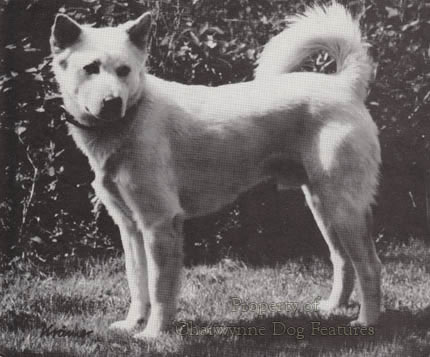 All over the world there are enthusiasts at work, pioneering their particular breed or type of dog. Most work with established breeds, ideally in pursuit of enhancement. Some work towards kennel club recognition for their favoured type; others are seeking variations on breeds already recognised, some are seeking to avoid the inbred or exaggerated features of accepted breeds and many just promote superlative hunting or herding dogs and don't give a damn about kennel clubs. They are mostly nonconformists and often deserve our admiration. As Emerson put it a hundred and fifty years ago: 'Whoso would be a man must be a nonconformist.' The slavish adherence to a closed gene-pool is not always wise and it takes a nonconformist, as Emerson hinted, to be prepared to stand alone. The recognition of a breed usually relies on vigorous promotion by a group of enthusiasts rather than vision from a kennel club.
All over the world there are enthusiasts at work, pioneering their particular breed or type of dog. Most work with established breeds, ideally in pursuit of enhancement. Some work towards kennel club recognition for their favoured type; others are seeking variations on breeds already recognised, some are seeking to avoid the inbred or exaggerated features of accepted breeds and many just promote superlative hunting or herding dogs and don't give a damn about kennel clubs. They are mostly nonconformists and often deserve our admiration. As Emerson put it a hundred and fifty years ago: 'Whoso would be a man must be a nonconformist.' The slavish adherence to a closed gene-pool is not always wise and it takes a nonconformist, as Emerson hinted, to be prepared to stand alone. The recognition of a breed usually relies on vigorous promotion by a group of enthusiasts rather than vision from a kennel club.
The West Country Harrier, the Welsh Foxhound, the Studbook Harrier, the English Basset and the now dispersed but very distinctive Dumfriesshire Foxhound represent the hunting fraternity's contribution. This sad dispersal resulted from the RSPCA-led banning of fox-hunting; Richard Martin, whose energy and vision brought about the formation of the RSPCA, was a keen fox-hunter. Such hounds may well be the soundest dogs in Britain. The Trailhounds follow scent not quarry but are probably the fittest dogs in Britain. Working terriers like the Fell, the Patterdale, the Plummer and the Sporting Lucas flourish and are likely to survive long after recognised terrier breeds like the Sealyham, the Skye and the Dandie Dinmont have disappeared. Other unrecognised types like the Balla, the Letts, the Clapheaton and the Heysham have not found favour. The 'Hancock' lurchers, bred by my namesake, and available in many hundreds, may well be the soundest merle dogs yet bred. Welsh Wheaten Terriers are being promoted by some enthusiasts.
Dorset Olde Tyme Bulldogges and the Victorian Bulldogs I have judged are far healthier specimens than the majority of the KC Bulldogs I see at shows. Show fanciers tend to live in their pedigree world and many need to open their eyes and understand what livestock breeding is essentially about. It is never good enough just to recycle old genes in the pious hope that an outstanding dog will appear, like magic, one day. Livestock breeding has to be the perpetual positive pro-active seeking of improvement not the craven perpetuation of purebred stock, whatever their genetic health ,or the soundness of their anatomy. The Gafaelgis or Black Welsh Mastiffs of Gareth Williams are sounder dogs than the KC Mastiffs I see in the show ring; are we seeking sounder healthier Mastiffs or blindly perpetuating a closed gene pool? 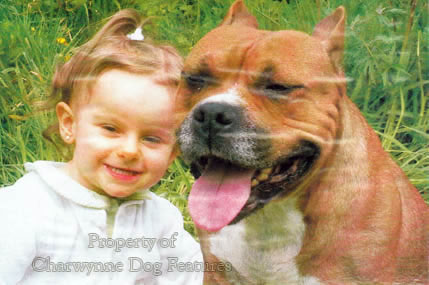
The fanciers of Shiloh Shepherds, White GSDs and Saarloos Wolfdogs are only doing what our distant ancestors did, seeking an unexaggerated, soundly-constructed, virile breed and not just marching in step with the others. I mourn the loss of the impressive GSDs of my youth, displaying a level topline and a hindquarter which would not disgrace a Foxhound. Half a century ago, some GSD breeders decided to lengthen the back, despite the evidence from America and experience from service dog users. Breeding for excessive angulation in the breed too has combined to produce poor movement, cow hocks, spinal problems and disc-size difficulties. Once, when working in London thirty years ago, I walked behind a Met police-GSD and its handler, for the best part of a mile. The hind movement of the dog was simply appalling. The dog reflected the faulty thinking in the breed at that time, time for a nonconformist to step forward!
We know that old-established breeds like the Standard Poodle and the Balinese Mountain Dog have a relatively healthy genotype, but that newly-created breeds can have rather too much 'genetic junk' .Who knows what genetic defects are present in the gene pool of Moscow Terriers, Munchkins and Mi-Kis? Breeders of pack hounds and hunt terriers have long been less tolerate of sickly, diseased or flawed dogs; all too often flawed pedigree dogs are bred from. Ranchers using a Huntaway, a Catahoula Leopard Dog or a Florida Cow Dog expect their dogs to function; their views on breeding are not hidebound but rooted in necessity. A catch-dog like the Alapaha Blue Blood Bulldog either functions or it gets kicked to death by stroppy bulls. What are the criteria used to select breeding material in most purebred dog breeds? Appearance? Gait? Coat? Colour of coat? Fad of the Day? Just having champions as parents?
Kennel Clubs, whether anxious for more registration money or succumbing to the persistence of a determined bunch of fanciers are not slow to recognise newly created breeds, as the Cesky and Russian Terriers, the Eurasier and the Nova Scotia Duck Tolling Retriever demonstrate. One day soon emergent breeds like the Alaskan Kai Klee, the Utonagon, the Chinook and the Belgian Mastiff will join them. Some will have been promoted by nonconformists; once recognised they will all have to conform. But who apart from show ring judges will dictate their future form? There will be no tests of functional ability, no geneticist to screen for defects and little likelihood of checks to prevent exaggeration. In the 2lst century, is that acceptable? Time for a nonconformist approach. 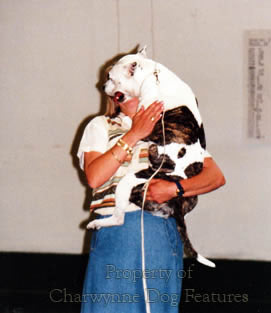
Conforming to a breed standard seems to be a matter of selecting which words you want to observe and those you don't. Mastiffs should have small ears, but don't. Bullmastiffs should have a jaw length of one third the skull length, but don't. The Rough Collie's coat should fit the outline of the body, but doesn't. The ears of the Cocker Spaniel should only extend to the nose-tip, but don't. The GSD's back should be straight, but isn’t. What does the word conformation in pedigree dogs actually mean? What are breeders conforming to? Sadly, too, in the welfare world, those appointed and paid to prevent cruelty no longer conform to that time-honoured mandate. It is calculated spine-chillingly conscious cruelty for a so-called animal welfare officer to call at a house, seize an innocent pet dog, because of its appearance, then arrange for it to be incarcerated in secret kennels for perhaps years. The RSPCA was set up to investigate complaints not cause them!
For some reason which is hard to fathom, and even harder to - justify, the RSPCA, and in Ulster the USPCA, are waging war on Irish Staffordshire Bull Terriers. Known to many artisan breeders as Irish Staffies, they are really leggy Staffordshire Bull Terriers and make no claim to being a distinct breed, just a type favoured by some nonconformist owners seeking a healthy pet. Sadly, as with all terriers with bull in their title, there is the risk that the dog-fighting fraternity will produce an aggressive strain of the American Pit Bull Terrier and dub them 'Irish Staffies' .But for an animal charity established to prevent cruelty to dogs to seize on that risk and to classify every leggy Staffie in the land as suspicious is scarcely rational.
The Anglo-Irish satirist Jonathan Swift would have found plenty of material in the current campaign being waged against dogs like these, deemed quite unreasonably to pose a danger to the public. Imagine a court of dogs trying humans suspected of belonging to a warlike race. A man claiming to be an Irish Saxon is derided and prosecuted, despite the fact that his mother actually was a Saxon and he was born in Ireland. There's no such race, the canine prosecution might bark, he's just a Trojan horse for the American Saxons, a warlike race, which will attack our puppies. 'What's his offence?' might yelp the canine defence team, 'he is not battle-scarred and he is too tall for a Saxon. ' 'No' might bark the dog DA, 'but he looks American and he goes to the gym to run on a treadmill. ' The dogs send the man to be 'humanely euthanised', a new form of ethnic cleansing. He has no human rights.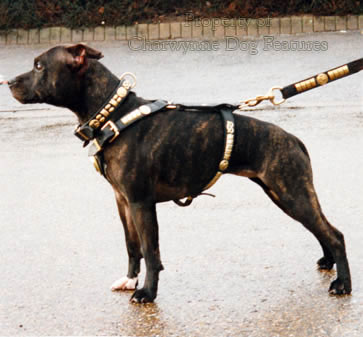
Crazy satire? I don't think so. And when humans prosecute dogs in a parallel situation it is just as distasteful and unjust. For a charity set up to protect dogs to be persecuting them is more Alice-in-Wonderland than Gulliver's Travels but still a real tragedy. Rudyard Kipling once wrote that politics is a dog's life without a dog's decencies. Nowadays a dog's life is being ended by politics without decency. When the nonconformist owner of an Irish Staffie pleads that his dog is just that, he is told that there is no such breed. But nonconformists are not the only victims of ill-informed prejudice, recognised breeds get no protection; pedigree Staffordshire Bull Terriers registered with the Kennel Club have been destroyed under the crazed mantle of the discredited Dangerous Dogs Act. Yet KC-approved judges have been sent to declare whether Irish Staffies are real Staffies or not. Irish Bull Terrier would be a safer name than Irish Staffie; Bull Terriers have no height or weight stipulation in their breed standard and that could help. Please spare them however from the KC Bull Terrier's egg-shaped head!
Irish Staffies are nearly always owned by working class people, who do not wish to own expensive pedigree dogs and genuinely don't care about breeds. Aha, cry the dog-haters, the Irish Staffie is just a front for Pit Bulls and they're too high on the leg to be a true Staffie. Well, none of their fanciers claim that the Irish Staffie is meant to be a Staffordshire Bull Terrier, as recognised by the Kennel Club. They merely favour their own type of Bull Terrier, just as the nonconformist men of Staffordshire did a century or so ago. Irish Staffies are around two inches higher on the leg than the recognised breed, leading to allegations of their being bred for fighting. But the old dog-fighting men chose a dog lower on the leg, much more like the pedigree breed, as experts like Fitz-Barnard, Colby and Stevens have testified in their books.
A Staffordshire Bull Terrier dog should weigh between 28 and 38lbs. In Colby's Book of the American Pit Bull Terrier he describes nearly all the most successful dogs in his many years in dog-fighting. His father John bred and sold around 5,000 dogs. He gives the weights of many of his fighting dogs: Pilot 271bs, Tige 351bs, Boxer 331bs, Spring 311bs, Grip 291bs, Major 331bs, Pupsy 33lbs, Peter 33lbs, Tinker 381bs, Brandy 311bs, with the champion fighting dog of Mexico in 1922 weighing 391bs. Why then should the RSPCA consider that an 'Irish Staffie' appreciably bigger than that should pose a bigger danger than a dog the size of a purebred Staffie? 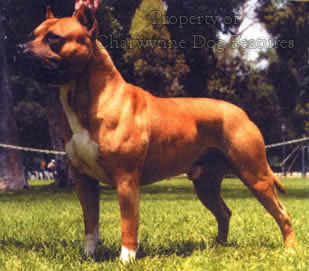
In his instructive but horrific book Dogs of Velvet and Steel, Pit Bulldogs: A Manual for Owners, Bob Stevens writes phrases like: 'Lil...is in excellent shape...She is exactly on the weight she is supposed to be which is 361bs...she has the ideal conformation for pit fighting.' 'The smaller dog is an extremely hard biter and very powerful.' In his book Thirty Years with Fighting Dogs, written in the early 1900s, Armitage writes of his lengthy experience with dog-fighting; he favoured a shorter legged dog which went in low. Colby recommended a dog which he called the chest dog, which he considered the best style in the pit, which went in low with a 'boring-in style'. Why then does the RSPCA look out for leggy Staffies as an increased sign of being bred for fighting?
Should terriers with bull in their title be regarded as a danger because of the risk of their biting someone? In the most comprehensive survey ever conducted in America, breeds inflicting the most bites were found to be GSDs and Rottweilers. Vets who were consulted rated Chows the most likely to bite. Dog bite surveys both here and in America show that most dog-bites are not inflicted by terriers. Most dog- bites are not inflicted by muscular, strong-headed dogs like the bull breeds. And why, in an age when obesity is killing so many pet dogs, should the use of treadmills be linked automatically with the preparation of a dog for fighting? But no sane person wants to put a child at risk from a dog; every dog which bites a human without reason or warning is dangerous and must be destroyed. But the way in which some police forces and more regrettably some charities are condemning dogs by breed or conformation/anatomy is simply disgraceful. Dog control seems to be following Sir Ernest Benn's description of politics as the art of looking for trouble, finding it whether it exists or not, diagnosing it incorrectly, and applying the wrong remedy. Shame on any animal charity for becoming political. Shame about the penalties being paid by those nonconformists favouring the Irish Staffies. Shame about their euthanised pets too! Looks can kill!